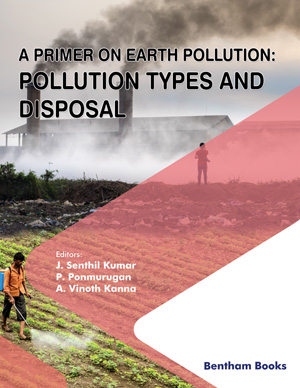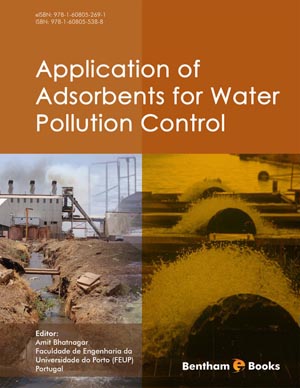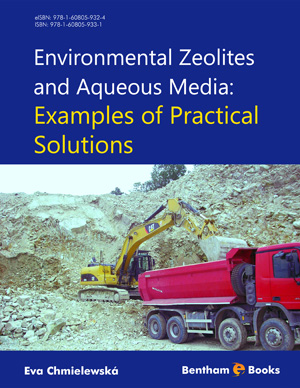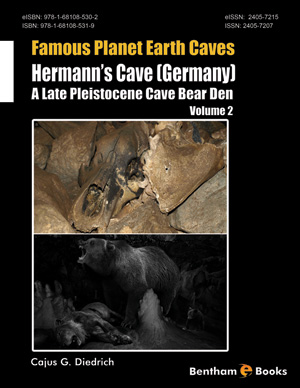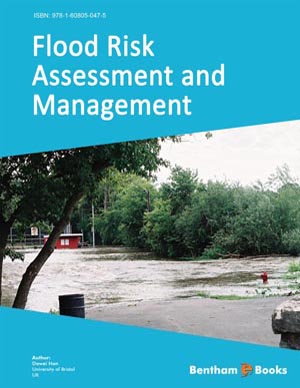List of Contributors
Page: v-v (1)
Author: Ashok Kumar and Dong-Shik Kim
DOI: 10.2174/9781681084718117010003
Approach to Developing a Sustainability Office at the University Level
Page: 1-28 (28)
Author: Daryl M. Pierson, Samiah N. Alqahtani, Rachel Muelle and Carol J. Miller
DOI: 10.2174/9781681084718117010004
PDF Price: $15
Abstract
The process of effectively advancing sustainability on a university campus takes a coordinated effort achieved through an institutional commitment. Wayne State University (WSU) embarked upon a campus-wide initiative to develop a report that would guide the institution toward achieving the triple-bottom line of environmental, economic, and social sustainability. A multi-disciplinary group made a series of recommendations that would usher WSU forward in sustainable best practices within the campus environment. Of singular importance among these recommendations was the call for a dedicated office that would have oversight of University sustainability initiatives. Nearly four years following the initial report, WSU established an Office of Campus Sustainability (OCS) charged with coordinating the University’s efforts to move toward an environmentally-friendly institution. The pathway leading to opening the OCS was long and arduous with various results yielding successes and challenges. The office structure played an important role in the scope of activities that the sustainability office could become engaged. Importantly, initial administrative support became tepid through leadership changes slowing attempts to gain traction on campuswide initiatives. Through continuous attempts at campus engagement OCS has been able to build a foundation that would help solidify its standing as a campus resource while proving to be a valuable means of developing worthwhile sustainability programming.
A Comprehensive Overview of University and College Recycling Programs
Page: 29-49 (21)
Author: Brooke E. Mason
DOI: 10.2174/9781681084718117010005
PDF Price: $15
Abstract
Recycling was one of the first steps many colleges and universities took to make their campuses greener. Schools began to realize the benefits of recycling including reduced costs for landfilling, saving raw materials, pollution prevention, and many others. Not all campus recycling programs operate under the same parameters and can differ significantly depending on the labor structure and collection system used. Despite the system a campus selects, additional factors must be considered to develop a successful program including campus support and education, program branding, bin selection and placement, operational efficiencies, as well as planning and tracking. Today, many school recycling programs go beyond providing only basic recycling services. Programs have branched out to also focus on additional initiatives including recycling competitions, event recycling, composting programs, electronics recycling programs, reuse programs, and student education and behavior changing initiatives. The latest trends to push their campuses towards a sustainable future include broader zero waste goals, removing trash cans from offices and classrooms, plastic bag and bottle bans, and paperless campuses.
University Waste Reduction and Pollution Prevention Assistance Programs: Collaborations with Industry, Government and Academia
Page: 50-59 (10)
Author: Matthew J. Franchetti
DOI: 10.2174/9781681084718117010006
PDF Price: $15
Abstract
Since the mid-1990’s collaboration between the local government, industry, and academia was established to offer zero cost energy and waste assessments to businesses and organizations that operate in Lucas County, Ohio, USA. The research project, named the Business Waste Reduction Assistance Program (BWRAP) has performed over 85 solid waste assessments and identified over 125,000 short tons of waste for reduction. In addition to the waste reduction, the BWRAP program has also identified over $3.5 million in cost savings through the implementation of the recommendations. This chapter provides an overview of the BWRAP program including its framework and a comparison to similar collaborations in the US. A case study is also provided.
University Waste Reduction and Pollution Prevention Assistance Greening College Campuses through LEED Certification
Page: 60-71 (12)
Author: Nadja F. Turek and Dong-Shik Kim
DOI: 10.2174/9781681084718117010007
PDF Price: $15
Abstract
Greening efforts on campus are often reported to enhance students’ performance in class and help higher education systems better equipped with a strong sense of sustainability. LEED certification program promotes the greening efforts on campus that can also affect surrounding communities. This chapter looks into these efforts and their consequences on and around campus. Two exemplary schools are selected based on their success in implementing LEED program into building construction and renovation and applying it to the pedagogy of education for sustainability and eco-friendly practices. Georgia Tech has successfully transformed its campus more walkable, bikeable using LEED as a tool for on-going operations and maintenance of the campus. LEED program is aligned with its more than 100 courses with a sustainability focus. The University of North Carolina at Greensboro (UNCG) successfully completed building renovation through LEED. The project is notable because of the reuse of existing structural elements rather tearing down and using new materials.
Graduate Education for Sustainability of Sugarcane Biorefineries in Mexico
Page: 72-92 (21)
Author: N. Aguilar-Rivera, A. Castillo-Moran, V. Enríquez-Ruvalcaba, A. Herrera- Solano, N. Milanés-Ramos and D.A. Rodríguez-Lagunes
DOI: 10.2174/9781681084718117010008
PDF Price: $15
Abstract
Sugarcane Biorefineries provide an important issue to several applied fields of technologies because they integrate sustainable sugarcane byproducts utilization with basic sciences and core technologies. However, for competiveness, they require highly multidisciplinary skilled human resources in engineering, agronomy, biology, economics and others. In Mexico, sugar agro-industry produces a single undifferentiated final product (sucrose) with the implementation of highly polluting conventional transformation processes, and with demands of fossil energy. It also creates low level of integration of universities for the implementation of technological innovations in the sugar industry and a number of socioeconomic constraints and low environmental sustainability. Therefore, the University of Veracruz, with professionals from all areas of knowledge, located in the Mexican region with the highest sugar production, has carried out a sugarcane master’s program with the commitment to enhance sustainability, training, development of educational capabilities and technology transfer and professionalization for sugar industry stakeholders since 1996. The Master's Program allows to develop skills of agronomic and sustainable conversion technologies, and strategic management for graduates. It promotes regional development to build biorefineries according to sustainable development and competiveness with a wider international perspective and also the participation of sugar and ethanol technicians sharing practical experiences. This approach discusses in detail the structure of graduate academic program as well as the necessary technology and research actions and the fundamental participation of technical graduates for the transition from traditional sugar industry to sugarcane biorefinaries.
Teaching Life Cycle Assessment (LCA) to Graduate Students at The University of Toledo
Page: 93-108 (16)
Author: Defne Apul and Jay Devkota
DOI: 10.2174/9781681084718117010009
PDF Price: $15
Abstract
Life cycle assessment (LCA) is a tool for assessing the environmental impacts of a product or service throughout its life cycle. LCA is considered an important modeling tool for sustainability assessment and many universities are currently offering LCA courses. However, due to unavailability of established text books or approaches, it is difficult for an instructor to develop and teach an LCA course. The goal of this chapter was to share the experience from the University of Toledo in developing and teaching of an LCA course. A systematic approach based upon Fink’s taxonomy of learning was used in designing the course. The course was organized in ten learning modules: introduction to LCA, LCA steps, EIOLCA, process based LCA, computational structure of LCA, carbon footprint analysis, personal footprints, life cycle costing, LCA peer reviewed literature, and semester long project. Active learning methods were used throughout the semester with at least one assignment per module. The process based LCA module was taught via slides, manual matrix calculations, and use of the commercial GaBi LCA software. The LCA peer reviewed literature module included written and oral presentation assignments requiring students to evaluate the LCA aspects of the paper as well as technical writing and technical quality of the paper. The semester long project was taught using multiple steps and encompassed most of the course objectives identified earlier in the course design.
Enhancing Environmental Sustainability Through A University Field Station
Page: 109-144 (36)
Author: Carol A. Stepien, Frank J. Calzonetti, Jonathan M. Bossenbroek, Kevin P. Czajkowski, Timothy L. Bollin and Cyndee L. Gruden
DOI: 10.2174/9781681084718117010010
PDF Price: $15
Abstract
University field stations are located off site from the main campuses and frequently in a natural setting, providing opportunity for students, faculty, and the public to engage with - and appreciate - local ecosystems. Their missions usually encompass the three cornerstones of environmental research, education, and outreach/community engagement, which go hand-in-hand with understanding and furthering sustainability. University field stations enhance environmental sustainability by helping to preserve a natural setting for coming generations, fostering research and monitoring of local ecosystems and their component biodiversity, and training the next generation and citizen scientists for field and laboratory work. Here we provide an example of how we are addressing sustainability through growth of the Lake Erie Center, a mid-sized university center with modest funding and staff that is located at the heart of land-water issues of runoff, sedimentation, algal blooms, legacy contaminants, and habitat loss facing the world’s largest freshwater ecosystem of the Laurentian Great Lakes. We have networked our mission by building an Environmental Science Learning Community, which brings together faculty, students, educators, agencies, stakeholders, and the public to work towards the common goal of improving land-lake ecosystem services. This background has allowed us to rapidly respond to the August 2014 “Toledo Water Crisis” in which the Lake Erie water supply to 500,000 local citizens was contaminated by the algal toxin microcystin, resulting in a “do not drink” health advisory. The Lake Erie Center’s strategic location, both geographically and scientifically, has enhanced our effective education, research, and community engagement programs.
Life Cycle Assessment of a Solar Power System Designed to Meet University Energy Demand
Page: 145-162 (18)
Author: Akhil Kadiyala, Raghava Kommalapati and Ziaul Huque
DOI: 10.2174/9781681084718117010011
PDF Price: $15
Abstract
This book chapter evaluated the life cycle assessment (LCA) of a solar power system designed to meet university energy demand. A three-step approach was adopted and implemented in this study to determine the scope of using a solar power system as a sustainable renewable energy source. The three-step approach included: (a) design of a solar power system based on university energy demand, (b) review of published solar energy LCA studies to identify appropriate material-based solar cell for consideration in design, and (c) performing economic input-output LCA (EIO-LCA) of the designed the solar power system to understand the environmental impacts. The design of solar power system in this book chapter was based on the actual peak monthly energy demand of 397,911 kilo watt-hours from select facilities within Prairie View A&M University, Prairie View, Texas. This study adopted the use of crystallinesilicon (c-Si) solar panels on the basis of optimal energy efficiency with respect to pricing. The designed solar power system comprised of 27,089 ZBR-280P mc-Si solar panels, 1,957 Rolls 1,284 ampere-hour battery banks, 1,529 PST-240 1000 watt inverters, 10,283 Sunforce-60022 30 ampere solar charge controllers, and 27,089 solar panel universal mounts with folding tilt legs. EIO-LCA results of the designed solar power system indicated a total release of 14,241 metric tons of CO2 equivalent GHG emissions and 170 tons of conventional air pollutants. This book chapter provides detailed insights on the design and LCA considerations for use by educational institutions when consi-dering the adoption of solar power systems to go green.
Approaches to Sustainability in a Shrinking City: A Collaborative Urban Design Studio in Toledo’s Civic Center Mall
Page: 163-187 (25)
Author: Sujata Shetty and Andreas Luescher
DOI: 10.2174/9781681084718117010012
PDF Price: $15
Abstract
Once a flourishing manufacturing center closely linked to the auto industry, Toledo and its region are struggling with a number of challenges, among them the long-term decline in the manufacturing sector and the recent economic downturn. Over the past four decades, the city has lost about a quarter of its residents. This is reflected in the physical fabric of the city in the increasing numbers of vacant and abandoned homes and buildings, as well as vacant land. By many definitions, Toledo is a shrinking city. Although they are found all over the world, shrinking cities are concentrated in old industrial regions and are challenging conventional approaches to architecture, urban design and urban planning. These disciplines have historically been framed by narratives of growth and a reluctance to speak about shrinkage or decline. This is true of urban policy as well, where even when focusing on the sustainability of cities, the underlying presumption has always been of growth. We use this chapter to explore what sustainability means in a shrinking city and how we can prepare students of architecture and urban planning to work in this context. We begin by examining policies used in shrinking cities in the old industrial belt, then focus on Toledo's history of dealing with this challenge. We discuss four urban design ideas proposed by students of architecture and urban planning working collaboratively. These proposals deal explicitly with the challenges of vacant land in a shrinking city and based on these, offer some lessons for a sustainable future.
Development of a Methodology to Evaluate the Impacts of Public Transport Bus Emissions Using Biodiesel as a Sustainable Alternative to Conventional Fuels
Page: 188-211 (24)
Author: Akhil Kadiyala
DOI: 10.2174/9781681084718117010013
PDF Price: $15
Abstract
This book chapter provides insights into the development of a methodology to evaluate the role of geographic information systems (GIS) and AERMOD software in understanding the impacts of biodiesel as a sustainable alternative fuel for use in public transportation buses at a microscopic level in the City of Toledo and Sylvania Township areas in the State of Ohio, USA. The methodology discussed in this book chapter is comprised of a multi-pronged step-by-step approach that included: (i) implementation of a real-world exhaust emission field monitoring study, (ii) use of ArcGIS software in examining study area features that included identification of the salient features (e.g., schools, churches, hospitals) within a certain vicinity radius of the exhaust emission field monitoring study, (iii) use of AERMOD dispersion air quality model in ranking the most affected salient features (identified with ArcGIS) based on the regulatory dispersion modeling of exhaust emissions from public transportation systems operating on biodiesel, and (iv) estimation of a quantified reduction in exhaust emissions with use of biodiesel as a sustainable alternative fuel to conventional fuel in public transportation buses on the basis of existing literature. This book chapter presents a comprehensive assessment of the adopted methodology and discusses in detail on how GIS and AERMOD software may be used by environmental students, engineers, and scientists in understanding the impacts of biodiesel as a sustainable alternative fuel for use in public transportation buses with emphasis on the exhaust emissions of CO, NOx, and SO2.
Sustainable Military Installations
Page: 212-232 (21)
Author: Mark N. Goltz and Nadja F. Turek
DOI: 10.2174/9781681084718117010014
PDF Price: $15
Abstract
Military installations and university campuses are, perhaps surprisingly, quite similar. The U.S. Department of Defense (DoD) has a number of programs focused on sustainable operations at its installations. In this chapter, we describe these programs and present some case studies that demonstrate implementation of sustainable practices within the DoD. Many of these programs and practices are universally applicable, with relevance to academic institutions.
Biological Nitrogen Removal Technologies for Wastewater Treatment - A Review
Page: 233-257 (25)
Author: Saima Badar and Izharul Haq Farooqi
DOI: 10.2174/9781681084718117010015
PDF Price: $15
Abstract
Conventional wastewater treatment does not normally remove nutrients to a remarkable extent. Pollution of water bodies due to discharge of nitrogen and its compounds are among one of the major problems. Nitrogen is present in the effluent of various industries, landfill leachates, and sludge digester effluent. Excess nitrogen discharge in water streams leads uncontrolled eutrophication, considerable loss of oxygen and unwanted changes in aquatic population. Biological nutrient removal technologies have been developed and more emphasis has been placed on limiting the nutrient discharge in water streams. New nitrogen removal technologies like single reactor system for high ammonia removal over nitrite (SHARON) process, completely autotrophic nitrogen removal over nitrite (CANON), anaerobic ammonium oxidation (ANAMMOX) process and granular sludge technology are easy in operation and cost effective. This paper presents a review on biological nitrogen removal technologies suitable for wastewater treatment.
Subject Index
Page: 258-260 (3)
Author: Ashok Kumar and Dong-Shik Kim
DOI: 10.2174/9781681084718117010016
Introduction
Campus activities for sustainable development are an effective way of learning and implementing sustainability in surrounding communities and industry. A college campus is an ideal place to practice and test new ideas and to learn valuable lessons from the results and mistakes. Sustainability Practice and Education on University Campuses and Beyond showcases many ideas and endeavors pursued on college campuses in the form of case studies. These case studies include past, current and projected activities to green college campuses. Specific topics covered in this book include student-driven and college-driven environmental sustainability programs in undergraduate and graduate classes, issues in teaching environmental sustainability, the LEED certification of universities, issues of shrinking cities, and a comparison of sustainable military bases with college campuses. Readers will be able to clearly understand the concept of sustainable development through a textbook approach to ‘crazy’ ideas presented in the book. In addition, the pedagogical challenges in sustainability education mentioned in the book address key issues arising due to the multidisciplinary nature of sustainability curricula. Sustainability Practice and Education on University Campuses and Beyond is a good resource on sustainability in environmental science courses for college students, faculty and sustainability-related researchers. Decision makers in government and industry positions looking for ideas for promoting sustainable development can also benefit from the contents of this book.



